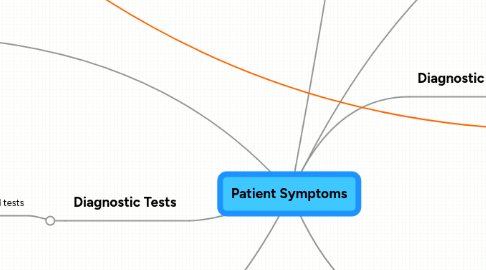
1. Diagnostic Tests
1.1. Blood tests
1.1.1. Positive Results
1.1.1.1. Disease: Diabetes
1.1.1.1.1. Type one diabetes: high glucose levels due to lack of insulin. Type two diabetes: body becomes resistant to insulin being produced.
1.1.1.1.2. frequent urination
1.1.1.1.3. unquenchable thirsth
1.1.1.1.4. weight loss
2. Treatments
2.1. Type 1 diabetes: requirement of daily insulin injections.
2.2. Type 2 diabetes: lifestyle change is necessary. But several different oral medications can be taken as well. Insulin injections are used only if oral medications prove inadequate.
3. Transmission
3.1. It appears that people who have family members who have been diagnosed with type 2 diabetes are at a greater risk for developing it themselves. African Americans, Hispanic-Americans and Native Americans all have a higher than normal rate of type 2 diabetes. However this is not set in stone. Following a healthy lifestyle plays an important role in the diagnosis.
3.2. Gestational diabetes affects about 4% of all pregnant women. It begins when hormones from the placenta make the mother insulin resistant. Many women who have gestational diabetes develop type 2 diabetes years later. Their babies are also at some risk for developing diabetes later in life.
4. The Pancreas
4.1. endocrine tissue: secretes insulin, glucagon, and somatostatin into the blood stream through the islets of langerhan
4.1.1. Insulin is secreted by beta cells which comprise 70% of the pancreas' hormone secreting cells.
4.1.1.1. FUNCTION: * promotes the storage of glucose, fatty acids, and amino acids * promotes the conversion of glucose to glycogen by stimulating the liver cells to take glucose from the blood and convert it glycogen, while at the same time inhibit the production of the enzymes that break down glycogen (ultimately decreasing blood sugar levels) * inhibits the conversion of fats and proteins into glucose.
4.1.1.1.1. REGULATION: insulin release is triggered by high blood glucose levels. It lowers blood sugar levels by binding to a cell surface receptor and accelerating glucose transport into the cell where glucose is converted into glycogen.
4.1.1.2. Insulin and Glucagon work as antagonistic hormones as they act on the liver causing it to convert glucose into glycogen when blood sugar levels are high (insulin), and transforming glycogen into glucose when the blood sugar levels are low (glucagon).
4.1.2. Glucagon is secreted by alpha cells which make up 22% of the pancreas' hormone secreting cells
4.1.2.1. FUNCTION: *stimulates mobilization of glucose, fatty acids, and amino acids, from storage into the blood. * stimulates the liver to convert glycogen into glucose and fat and protein into intermediate metabolites that are eventually converted into glucose * make the liver release the glucose it has stored in its cells into the blood stream, increasing blood glucose.
4.1.2.1.1. REGULATION:glucagon release is: * stimulated by low levels of glucose in the blood; * inhibited by high levels of glucose in the blood * inhibited by amylin.
4.1.3. Somatostatin is secreted by the gamma cells which make up only 8% of the pancreas' hormones secreting cells.
4.1.3.1. FUNCTION: * Inhibit the release of growth hormone * Inhibit the release of thyroid-stimulating hormone * regulate the rate at which food is absorbed from the large intestine
4.1.3.1.1. REGULATION: *Induced by low pH *released when there are high levels of blood glucose or amino acids
4.2. exocrine tissue: secretes pancreatic juice that contains digestive enzymes into a network of ducts that join the main duct along the length of the pancreas
4.2.1. FUNCTION: The enzymes help break down carbohydrates, fats, proteins, and acids in the duodenum. They travel down the pancreatic duct into the bile duct in an inactive form, and become activated when they enter the duodenum.
5. Diagnostic Tests
5.1. adbominal x rays
5.2. abdominal ultrasound or CT scans
5.2.1. Positive Results
5.2.1.1. DISEASE: Acute Pancreatitis
5.2.1.1.1. abdominal pain
5.2.1.1.2. chills
5.2.1.1.3. clammy skin
5.2.1.1.4. mild jaundice
5.2.1.1.5. During acute pancreatitis, the blood contains at least three times the normal amount of amylase and lipase, digestive enzymes formed in the pancreas. Changes may also occur in other body chemicals such as glucose, calcium, magnesium, sodium, potassium, and bicarbonate.
